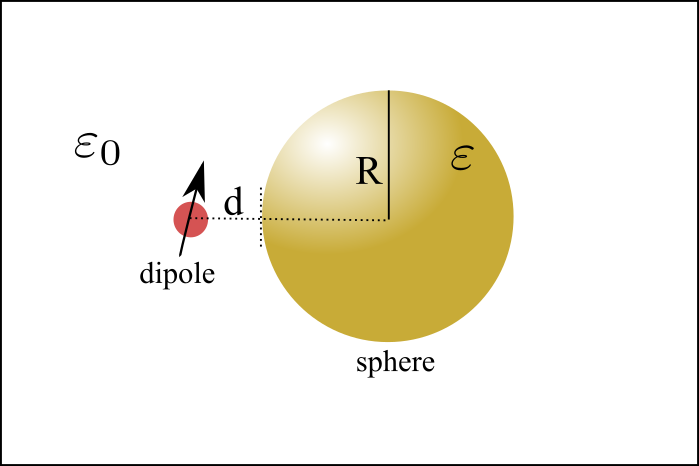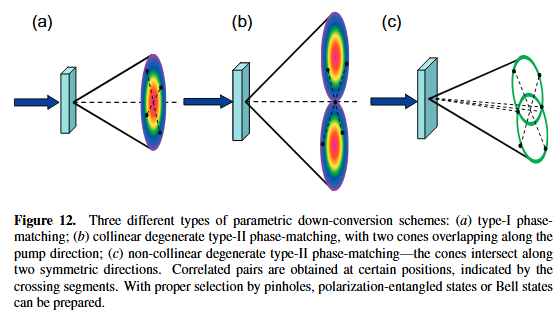Dipole's Emission In Multi-Layered Structure
Introduction
This is the note of dipole radiation pattern calculations in a multilayer structure.
The numerical realizations can be found in my Github.
The derivations mainly follow the work of Olivier J. F et .al ref1
Extra words
My previous calculations are not helpful since we can not get the emission pattern. In previous cylindrical expressions, the integral in
If we extract the information of
Green tensor expression
We will use Green tensor to get the dipole’s emission!

I will follow the derivations of Paulus et. al . The derivations will begin from the expression of the Green’s tensor. We still consider only the nonmagnetic material so
and for a homogeneous media the Green’s tensor can be expressed as
where $R=|\boldsymbol{R}|=|\boldsymbol{r-r0}|
and we can express the Green’s tensor as a Fourier transform of each wavevector,
Since we assume that the layers, which will be added later, are perpendicular to the z axis, we first perform the integration over
where
Now that we have the plane-wave expansion of the Green’s tensor for an infinite homogeneous background. It is a simple matter to include additional layers. Indeed, the effect of these layers will be to add two plane waves, one propagating upward and one downward, to each Fourier component, The amplitudes of these additional components are determined by the boundary conditions at the different interfaces. Since the Green’s tensor represents the electric field radiated at
$\boldsymbol{\mathrm{\hat{k}}}(k{Bz}),\boldsymbol{\mathrm{\hat{I}}}(k{Bz}),\boldsymbol{\mathrm{\hat{m}}}(k_{Bz})$
Equivalently, another orthogonal system is formed by $\boldsymbol{\mathrm{\hat{k}}}(-k{Bz}),\boldsymbol{\mathrm{\hat{I}}}(-k{Bz}),\boldsymbol{\mathrm{\hat{m}}}(-k_{Bz})
we can rewrite the Green’s tensor as
To obtain the Green’s tensor
where $k{l}^2=\omega^2\varepsilon_l\mu_l
We need express each component of the Green’s tensor and then we can write the field distribution for an arbitrary orientate dipole. And the coefficients can be obtained from the outer layer to the emitting layer. It’s necessary for us to write the explict form of the Green tensor. We write the Green tensor as
We need write the explicit form of the tensor,
and
Since the definition in the [] let the sign attached to $Al,B{l}$, then
Here
with
For the s polarization
In above expressions,
the same with the lower space
the reflections can be calculated iteratively from the outer layer
where
and
So we can calculate the coefficients in the emitting layer, and the coefficients in other can be calculated via the transmission matrix.
In the upper space
where
In the lower space
where
The field expression and emission pattern
The Green’s tensor can be obtained in previous section, the electric field and magnetic field can be obtained from the Green’s tensor via
And we can write the electric field as
The far field
is determined by the Fourier spectrum
In the far field , the magnetic field vector is transverse to the electric field vector and the time-averaged Poynting vectors is
calculated as
Since the s and p polarized field are orthogonal, then we can express the far field power as
where the emission pattern is
Numerical Implementation
Our previous expressions are not suitable for numerical implementation since there are maximum numbers in the exponent. To let is more applicable we rewrite the expressions. We define in the upper space
and in the lower space
If we use these expression, The green tensor should be
where $z{l}=d{l+1}
In the upper space
where
In the lower space
where
Relations of amplitudes in different layers
In this section , I will complete the derivations of the relations of
For convenience we need write the Green’s tensor into a more simple from which can be used to express the boundary conditions. We can express the total green tensor as
where $F{A/B}
where $U{A/B}
S polarized light upper/lower layer
P polarized light upper/lower layer
Then in deriving the relations of coefficients between different layers, we can only use
which is more convenient to write. For convenience, we could also write the Green’s tensor as
so that the boundary conditions can be written as
Then
These equations are all we have. To get the relations, we need decouple the relations for different rows.
S polarized light
We first use the s polarized light as an example. For S polarized light, we have
Then Eq.
Then
So the relation between different layers has been derived and agree well with the reference.
P polarized light.
For P polarized light, the relation are more complex. We still substitute the detailed expression into Eq.
Still for the relation
Appendix
Dyadic Analysis
In this section a brief review of dyadic analysis is presented. Dyadic operations and theorems provide an effective tool for manipulation of field quantities. Dyadic notation was first introduced by Gibbs in 1884 which later appeared in literature. Consider a vector function
Now consider three different vector functions
Which constitute a dyad
It should be emphasized that
In general a dyad can be formed from the product of two arbitrary vectors
Reference
ref1. Accurate and efficient computation of the Green’s tensor for stratified media ↩








